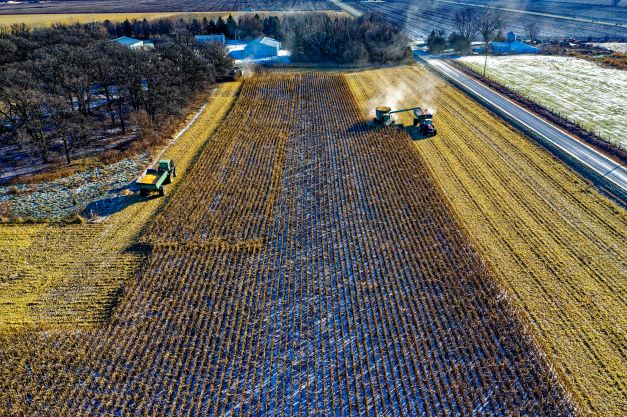
The prospects for realizing the dream of universal access to telecommunications are better than ever before as private networks fuel exponential growth in rural areas, small towns and extend to the periphery of the metropolitan regions neglected by incumbents. Small-size fixed-wireless companies, classified as Wireless Internet Service Providers (WISPs) that served communities in forgotten, sparsely populated areas in the USA, are poised for nation-wide growth.
Growth drivers
WISPs extend their reach with the mid-band CBRS spectrum that does not require line-of-sight signal propagation and widens reach, particularly for rural areas with undulating terrain interspersed with wooded areas. The acquisition of the CBRS spectrum by WISP companies has paved the way for the growth of private networks, especially to meet the needs of small businesses, precision agriculture, remote education, health, and utility networks in rural areas and small towns. As coverage increases, so does the ability to receive roaming traffic from the big urban players such as Verizon. Additionally, WISP companies use white spaces, historically reserved for TV networks, and mmWave to expand their coverage areas.
Typical of the recent explosion of growth of WISPs is the story of NextLink Internet of Hudson Oaks, Texas, which was the top investor in a CBRS auction, acquired 1,072 Priority Access Licenses (PAL) and paid US$28.4 million. It will use them to expand its coverage area to an additional 491 counties in 11 states. As a result, its subscriber base of 70,000, confined to rural areas north and west of Dallas-Fort-Worth, is poised to increase to 14 million customers potentially. In addition, it is building a private 4G LTE network that it is upgrading to 5G in collaboration with Nokia and Alpha Wireless.
WISPs subscriber base rose three times from 2.3 million in 2012 to an estimated 6.9 million in 2020. The number of subscribers is expected to rise to 12.7 million in 2025. An estimated 42 million Americans do not have access to broadband, mostly in rural areas, according to BroadbandNow, compared to FCC’s estimate of 21 million.
Broadband access dramatically transforms small companies in rural regions. A case in point is the story of Cam McCurdy of Marion, Illinois, who dropped his plan to pursue a business in metal-cutting due to poor connectivity. Instead, he founded ProTek Communications with a tower in his backyard and expanded it with fiber optics for backhauling. His wife took advantage of the high bandwidth communications to open the metal-cutting business.
Market segments
The mainstay of rural areas, agriculture, is undergoing a transformation aided by IoT and drone-assisted farming. Hurst Greenery in Missouri needed to monitor the temperature and soil moisture in 18 of its greenhouses which Trilogy Networks could do with its private LTE network. Farms in North Dakota are private networks to support drones to monitor the growth of weeds and spray pesticides precisely.
Covid-19 changed the attitude towards using private networks for remote education in rural areas. The spectrum dedicated to education was for long not utilized. During Covid-19, Resound Networks, a WISP that serves the Texas Panhandle, Western Oklahoma, and Eastern New Mexico, experienced a sharp rise in demand for its services from schools. Now WISPs, positioned for remote education in rural areas, are looking to increase their spectrum allocation.
Rural healthcare facilities have always been scarce and suffered from doctor shortages. As a result, urgent care is rarely available in the vicinity, and patients pay for expensive commutes to urban hospitals. In recent years, rural hospitals shut down as compensation for healthcare services was reduced by Medicare and Medicaid.
Telehealth has a compelling value in the context. For example, in Mississippi, 60 percent of counties are at least a 40-minute drive from specialty care facilities at the University of Mississippi Medical Center for Telehealth. Researchers at this center estimated that Mississippi Telehealth Diabetes Network would save $189 million if 20 percent of the diabetic patients in Mississippi participated in it.
Partnerships with urban technology companies
Recourse to private LTE networks has exposed Paladin Wireless to the broader world of technology and digital services that technology companies like Google and Microsoft bring to rural broadband telephony. For example, Google provides hard-to-access CBRS spectrum access system (SAS) skills for tracking in real-time, with sensors, the actual usage of the spectrum by the licensees of a slice of the spectrum. Other users are granted access when the spectrum is unutilized.
Microsoft has concentrated on the utilization of white spaces in the spectrum utilized by TV. Its technologies extend the range of propagation of this spectrum and avoid radio interference with adjacent users. Additionally, it has cultivated an ecosystem of companies that improve the efficiencies of technologies like dynamic spectrum access. It also funds service providers in local regions and pays for skills development.
Conclusion
A paradigm shift in telecommunications for rural and underserved regions is underway, aided by private networks, associated spectrum allocation policies, and dynamic utilization. What seemed financially unviable is advancing with some financial help from the Federal and state government programs.


